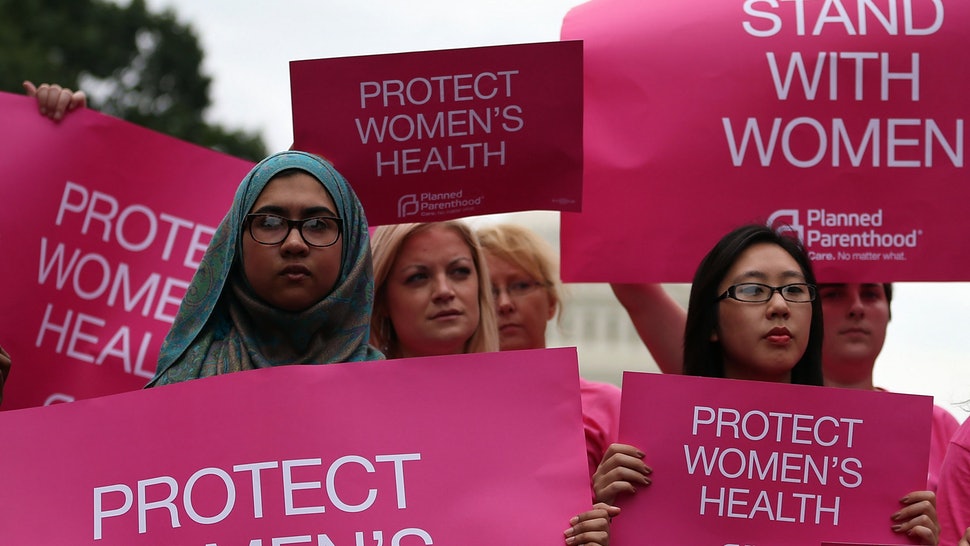By Anahita Ghajarrahimi
Abortion bans do not prevent the one thing they are supposed to: abortion. Instead, they restrict women from making decisions about their health. By banning abortion, women lose legal access to safe and effective abortions, which in turn threatens their health – the opposite of protecting life.
Contra Costa NOW believes that restricting access to abortion threatens women’s self-autonomy and ability to make decisions about their own bodies. State-level restrictions on abortion disproportionately affect groups like low income women and women of color; the intersections of oppression in these demographic groups build on one another, making access to legal and safe abortions much more difficult (3).
Brief historical background of Abortion Rights
Roe v. Wade, the landmark 1973 Supreme Court decision that declared abortion as constitutional right, affirmed that women have the right to privacy and that the state cannot interfere with a decision between a doctor and woman (2). However, through the 1992 Supreme Court decision on Planned Parenthood v. Casey, states could restrict and define how much of access women have to abortion, as long as there is no “undue burden” on the woman; the effects of this decision are increasingly seen today.
Current situation in state-level legislative policy on abortion
Most states allow abortions until 24 to 28 weeks of pregnancy, but recently several states have passed early abortion bans that vary in their limitations on when a woman can get an abortion (1). The most extreme case is Alabama; abortion is only allowed if the woman’s health is at risk, with no exception for rape or incest. Other cases include Ohio, Kentucky, Missouri, Louisiana, Mississippi, and Georgia, who recently passed laws that ban abortion after 6-8 weeks, and Utah and Arkansas, banning abortion after 18 weeks. Contra Costa NOW deeply condemns these states who have severely restricted women’s access to safe and legal abortions.
Communities of color are more at risk
Race and socioeconomic status disproportionately affect women’s ability to get an abortion because abortion access stems from greater access to healthcare. Women of color and low income women are among demographic groups that are under significant attack from restrictions on abortion; the Hyde Amendment of 1976 bans those who receive federally-funded health insurance, including Indian Health Services and Medicaid, from using their benefits for abortion costs – only cases of direct risk to women’s health and pregnancy due to rape and incest are allowed. The Hyde Amendment also unfairly affects women of color because of the systematic links between income inequality, racism, and sexism; for instance, 30% of Black women and 24% of Hispanic women are enrolled in Medicaid as opposed to 14% of white women (4). Thus, women of color, who are more enrolled in Medicaid than white women, face greater challenges in obtaining access to abortions. The current early abortion bans only increase the difficulty for these communities because the greater time restraints on when a women can legally get an abortion build on already-existing challenges of healthcare access (6).
What can we do to help?
In California, women have the choice to obtain an abortion up until fetal viability (usually 24 weeks), and post-viability abortions are still performed if the mother’s health, life, or overall well-being is at risk (5). However, other states do not offer the same reproductive rights. Speaking out against bans and uplifting those sharing their stories with abortion helps remove the stigma around the procedure. Donating directly to local, grassroots organizations is a monetary way to help out these states affected by the ban.
- The Yellowhammer Fund – Alabama
- SisterSong – Georgia
- Mississippi Reproductive Freedom Fund – Mississippi
- Gateway Women’s Access Fund – Missouri
- Preterm – Ohio
- Access Reproductive Care – Southeast
Planned Parenthood has begun the #BansOffMyBody campaign in order to gather support across the country to fight back against the recent bans. They plan on attacking these bans both in the courts and the streets. Planned Parenthood Northern California’s Director of Public Affairs, Lauren Babb, states that the organization “will always be there for our patients. We will fight to ensure that patients – and everyone in this country – can still access health care, no matter what.”
Contra Costa NOW champions those voicing their support for access to safe and legal abortions, especially for community members who face more challenges gaining healthcare access due to racial or socioeconomic status. Here are more ways to fight back against the abortion bans:
- Go to https://www.istandwithpp.org/call/house-nobans to call your U.S. representative and ask them to co-sponsor a resolution in support of protecting access to reproductive health care.
- Donate to The National Organization for Women to help us in the fight for greater reproductive justice.
- Take action via one of our mobilization campaigns here.
Sources:
Gordon, Mara, and Alyson Hurt. “Early Abortion Bans: Which States Have Passed Them?” NPR, NPR, 5 June 2019, www.npr.org/sections/health-shots/2019/06/05/729753903/early-abortion-bans-which-states-have-passed-them.
“History of Abortion.” National Abortion Federation, prochoice.org/education-and-advocacy/about-abortion/history-of-abortion/.
“Mobilize for Reproductive Justice.” National Organization for Women, now.org/nap/reproductive-justice/.
“Hyde Amendment.” Planned Parenthood Action Fund, www.plannedparenthoodaction.org/issues/abortion/hyde-amendment.
Rodriguez, Ambrosio. “Understanding Abortion Laws in California.” The Rodriguez Law Group, 4 June 2018, www.aerlawgroup.com/understanding-abortion-laws-in-california/.
“The Hyde Amendment.” National Network of Abortion Funds, 13 Jan. 2017, abortionfunds.org/hyde/.






